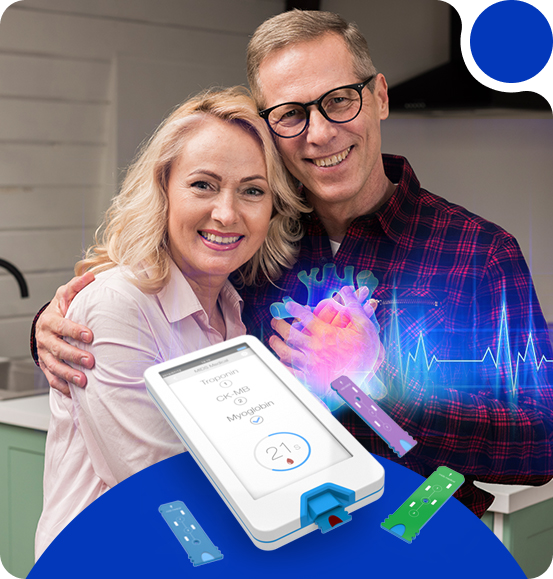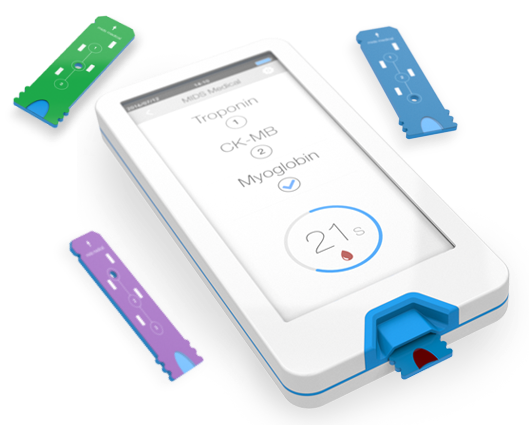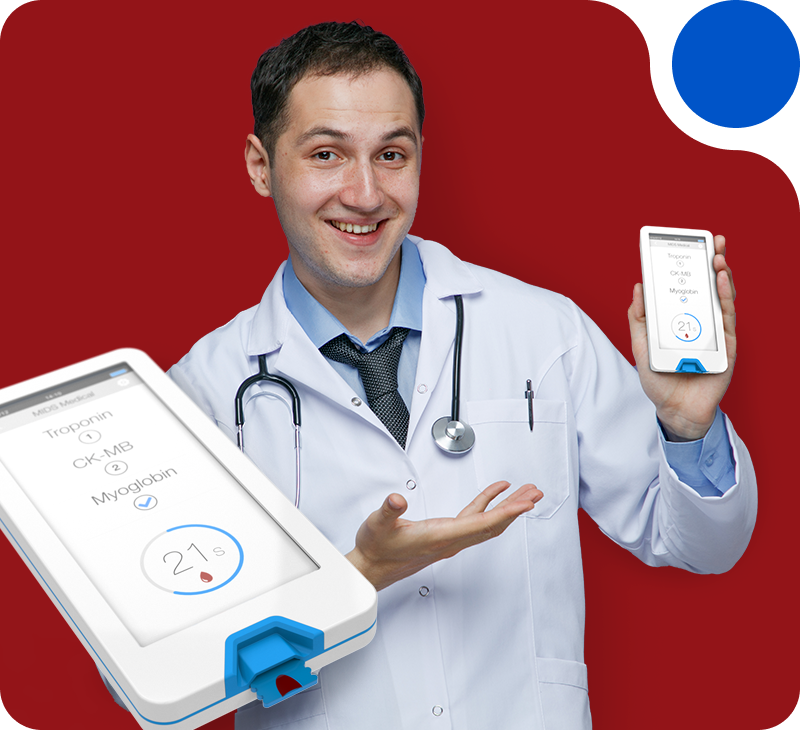Cardiac troponin is well documented as the preferred biomarker for diagnosis of myocardial infarction due to its high sensitivity and specificity for myocardial injury. Evidence continues to show that troponin is emerging as one of the most powerful prognostic biomarkers for the assessment of cardiovascular risk in the general population. Over the past 10 years cardiac troponins T and I (cTnT and cTnI) have emerged as the cardiac biomarkers of choice for the diagnosis of Acute Myocardial Infarction (AMI, heart attack). Although they are in clinical use in other parts of the world, including Europe, Canada, and Australia. There are no high sensitivity POC devices available for clinical practice in the “Golden Hour” which can compare with the growing use of these high sensitivity central laboratory cTnT and cTnI assays.
Laboratory analyzers and Point of Care tests are generally carried out by manipulating tagged magnetic assay beads and using optical technology to detect them. Large central laboratory analyzers use state of the art optical detection equipment during this process, have the capabilities to run confirmatory multiple tests simultaneously, and embody other techniques to achieve high sensitivity results. However, the major drawback is a slow turnaround time (TAT), when transport, testing and analysis times are taken into account. POC devices, due to their considerably smaller size, cannot effectively miniaturize the same technology. They are limited to optical detection of a lesser capability. In simple terms the assay beads are only viewed one or two dimensionally by the optical-sensing techniques and consequently only surface-visible beads are detectable. They are however regularly used because of their faster TAT, crucial when attempting to diagnose AMI, no other viable option being available when diagnosis time is so critical.

In contrast the NanoTesla DX technology is capable of detecting extremely low levels magnetic field disturbance (at nano-Tesla levels) generated by the displaced assay beads. This allows detection on a three-dimensional level by detecting and measuring the aggregated magnetic signature of the assay beads using a lab-on-chip, multiplexed test strip.
Incorporating the NanoTesla DX technology, NanoTesla DX Cardiac is being developed to deliver the following key features and benefits:
Incorporating the NanoTesla Dx technology, NanoTesla Dx Cardiac is being developed to deliver the following key features and benefits:
A step change in POC sensitivity and accuracy improvement, equal or superior to high sensitivity cardiac biomarker assays performed on central laboratory analyzers.
Test times 3 faster (1 assay) than existing POC devices




NanoTesla Dx world class team is developing POC hand held devices using a next-generation nano magnetic medical diagnostic technology.
© 2023 NanoTesla Dx. All rights reserved.